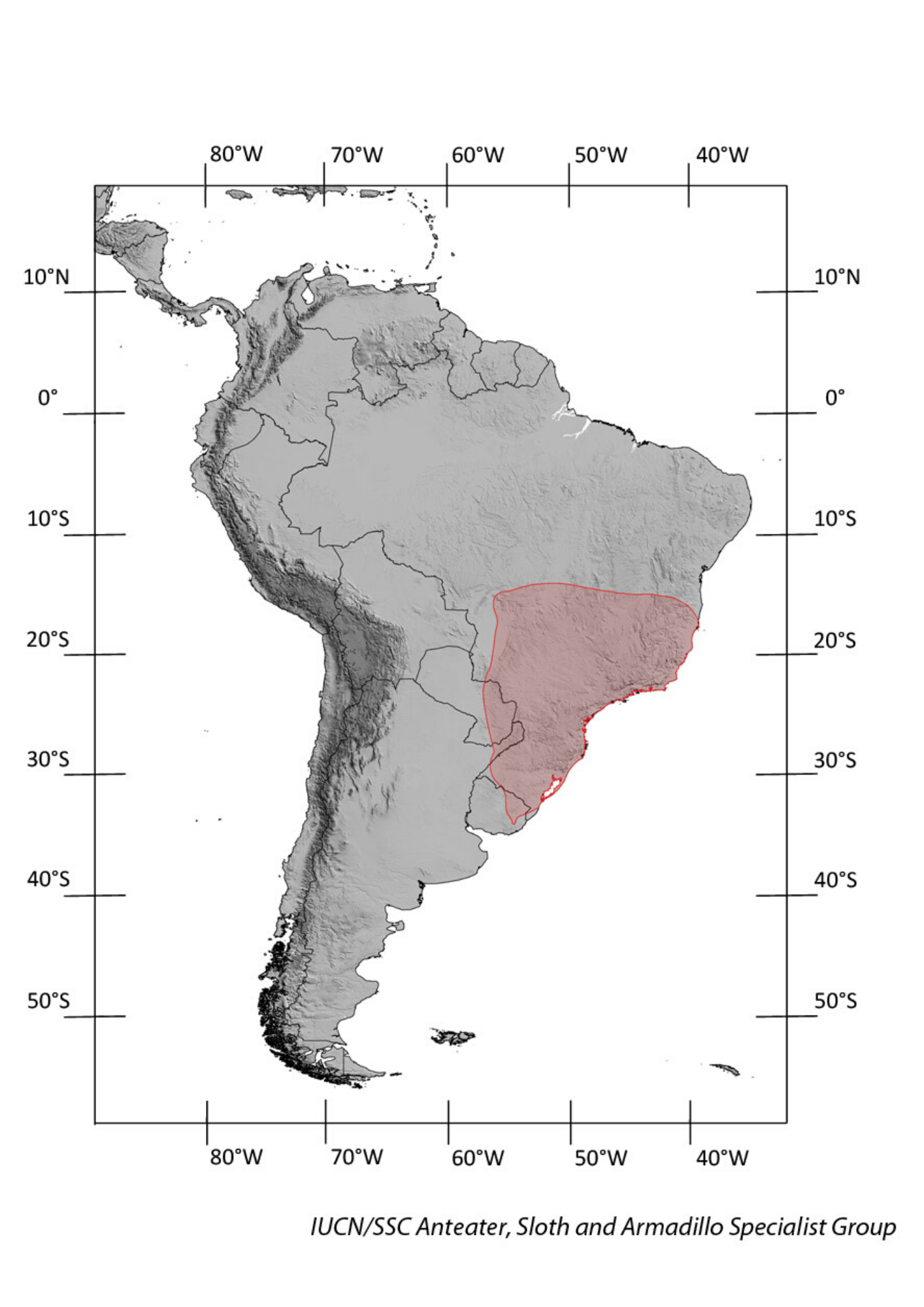Greater naked-tailed armadillo
(Cabassous tatouay)
other common names
–
Taxonomy
Order: Cingulata
Family: Chlamyphoridae
Subfamily: Tolypeutinae


description
With a head-body length of 36–49 cm and a tail of 15–20 cm, this is the largest species of naked-tailed armadillos. The carapace is reddish brown to blackish and has 12–13 movable bands. As the common name of this species implies, its tail is naked, i.e., it is only covered with small, widely spaced plates, but lacks the complete armor present in other armadillos. Its ears, of about 4 cm length, are funnel-shaped and well-separated from each other.

range
This species can be found in northeastern and southern Brazil, eastern Paraguay, northeastern Argentina, and Uruguay.

HaBITAT and ECOLOGy
The greater naked-tailed armadillo occurs in tropical lowland, submontane forest, open areas such as the Cerrado and grasslands with shrubs and trees. It can also be found in agricultural areas and, possibly, in secondary forest.
Few data are available about the ecology of the greater naked-tailed armadillo. It is solitary, nocturnal, and highly fossorial.

diet
This is an insectivorous species that mainly feeds on ants and termites.

reproduction
Not much is known about the reproductive strategy of this species. It presumably gives birth to a single young.

curious facts
When digging its burrows, the greater naked-tailed armadillo rotates its body, sometimes digging upside down. As a consequence, the burrow entrances and tunnels are circular.

threats
There is extensive habitat loss in much of the range of this species, including in the Cerrado and Atlantic Forest. In addition, the species is hunted locally for food.

Population trend
Unknown.

conservation status
Cabassous tatouay is listed as Least Concern due to its relatively wide distribution, presumed large population, its occurrence in a number of protected areas, and its tolerance to some habitat modification. In Uruguay, it is listed in CITES Appendix III.